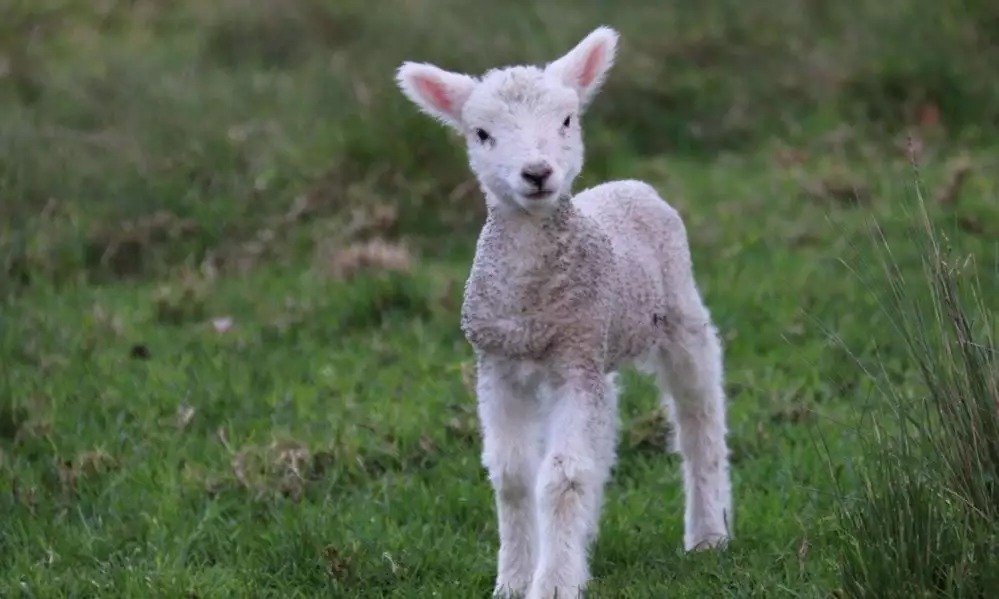Grace Church Jorhat
Jilika Path
Mission Campus
Jorhat, Assam - 785001
India
The Lamb Of Revelation


In chapter 5 of Revelation, John sees a strange vision. In the midst of the throne of God, He sees Jesus Christ, as a Lamb who appears to have been slain. The whole host of heaven and saints alike praise Him as victorious and the only One worthy to open the scroll with the seals. He is the only One worthy to execute God’s decrees for the ages, securing the salvation of the elect and the defeat and judgement of evil. I say it is strange, because we would not expect this victorious King, this Lion of Judah, to appear like a victim, a slain Lamb. But the song that is sung in the heavenly courts explains that He is worthy and victorious because He was slain. He has redeemed a people for God out of all peoples, tongues and nations and has decisively defeated the forces of evil by sacrificially shedding His blood. But what is the mystery of this slain Lamb? We ought to dig up Scripture to understand this mystery so that we may join in one accord with the heavenly band to praise His glory and victory.
Jesus has redeemed a people for God out of all peoples, tongues and nations and has decisively defeated the forces of evil by sacrificially shedding His blood.
The Lamb of Passover
Before we understand the reason why Jesus is called a Lamb in Revelation, we must be acquainted with another lamb in the book of Exodus. Chapter 11 describes a grim situation in the land of Egypt. The Pharaoh’s heart is hardened in depravity and the fierce judgement of God is about to fall on his land. The final plague, death of all the firstborn of man and beast of the Egyptians are going to be inflicted. God is going to use this to bring about the glory of His power (Exo. 11:9) in saving Israel mightily from Pharaoh’s clutches and their shackles of slavery. But Israel is going to be miraculously spared from this peril. God will pass-over the Israelites’ houses while visiting the houses of the Egyptians slaying their firstborns. God instituted a peculiar ritual to be observed by the Israelites in that particular month for all generations to remember that deliverance. Each house of Israel was to take a lamb on the 10th day of that month and kill it in the evening of the 14th day (vs. 12:3, 6). This lamb was to be without blemish and a male (vs. 12:5). Not one of its bones was to be broken (vs. 12:46). It was to be roasted and eaten with unleavened bread and bitter herbs. (Exo. 12:8) Its blood was to be applied on the two side posts and the upper door post of every Israelite house (vs. 12:7). God would see the lamb’s blood on their houses and He would pass over their houses and the plague would not enter their doors. (vs. 12:13). This was to be observed and remembered by all generations and their children as a memorial of God’s mighty salvation (vs. 12: 25-27).
But why did God ask Israel to observe this strange and elaborate ritual? Couldn’t God have simply struck Egypt and rescued Israel? It seems God wanted Israel to understand an important truth: their rescue and salvation from God’s judgement cannot be accomplished without the shedding of blood. Very soon, Israel would prove that they were not spared from the same plight of the Egyptians because of their righteousness. Their subsequent repeated disobedience of God in the following chapters prove that God would have been right and just to also destroy them along with the Egyptians. Ezekiel 5:6 testifies that Israel sinned more than any other nations around her. In Deuteronomy 9:6-7, God reminds Israel that He does not act in their favour because of their righteousness, for they are stubborn and rebellious and provoked the Lord to anger in the wilderness. When God visited Egypt with judgement, His wrath should have fallen upon both the Israelites and Egyptians. But God passed over them, only, and only because of His Grace, sparing their firstborns so that the promise God made to Abraham would not be at stake. God reminds Israel through this token that for them to be spared, a death must occur, the blood of a substitute must be shed, symbolized by the lamb. Therefore this lamb was called the Passover (vs. 12: 11). They were to remember this for all generations until the antitype (fulfilment) of this lamb finally appeared, saving God’s elect from His ultimate judgement and wrath against sin. The Passover feast looked forward to the arrival of the ultimate Lamb.
The Lamb Arrives
Israel was spared from the temporal calamity inflicted on Egypt and was given a temporal relief from slavery in Egypt. But the problem was still not over. They, and all mankind was still under the slavery of sin (Ps. 14:1-3). And there was yet another day of the LORD’s wrath when He would judge all the ends of the earth for their sins (Zep. 1:18). To be saved from that ultimate plague there was still a need for a Substitute, and the Passover in a way looked forward to the provision of the ultimate Passover Lamb. This is exactly what Isaiah said in Isaiah 53:7—that a Suffering Servant was to come to Israel as her Messiah, who like a docile lamb taken to slaughter would give Himself to be slaughtered for the transgressions of His people, and bear the sins of many. Like the Passover lamb, He would be without blemish, that is no deceit would be found in His mouth (vs. 53:9) and would be a righteous substitute for His people (vs. 53:11).
Years later, when John the Baptist appeared and saw and baptized Jesus Christ, this is what he said, “Behold, the Lamb of God, who takes away the sin of the world!” (Jn 1:29). The ultimate Passover lamb is God Incarnate Jesus Christ, who came not just to atone for the sins of Israel but of the world.
Jesus is the Passover
When Jesus sat down to eat the last Passover of His life with His disciples, He picked up the unleavened bread and said, “Take, eat; this is my body” (Matt. 26:26). Through this Jesus declared that He is the true Passover Lamb who will lay down His life as a ransom for many, and His flesh must be eaten, i.e. the fruit of the sacrifice He accomplished in His body by bearing our sins and suffering the wrath of God must be received by faith. He then picked up the cup and said “Drink from it, all of you, this is my blood of the covenant, which is poured out for many for the forgiveness of sins” (Matt 26:27) thus saying that His blood is the real token of Passover which will be shed to atone for sins. God put forward His Firstborn Son as a propitiation by his blood, to be received by faith. This was to show God’s righteousness, because in his divine forbearance he had passed over former sins (Romans 3:25).
Jesus is the lamb who has prevailed, who rose again defeating sin and death and is seated on the throne as the Lion of Judah
The parallels between the Passover lamb and Jesus is striking. Like the lamb without blemish, Jesus was without a trace of sin (1 Pet. 1:19; 2:22). Like the lamb, while He was on the cross not one of His bones was broken (Jn. 19:36). Like the lamb’s blood applied to the doorposts for the atonement of the Israelites, the robes of the believers have been washed in the blood of the Lamb (Jesus) making them white and spotless (Rev. 7:14). Israel ate the Passover lamb’s flesh, and so are we called to eat the body and drink the blood of Christ to have eternal life (Jn. 6:24), that is in faith believe and rely on Christ’s sacrificial death for our salvation. The Passover lamb was eaten with unleavened bread, which symbolised both the sinlessness of Christ and the regeneration and freedom from sin that we have as a result of Christ, our Passover’s sacrifice (1 Cor. 5:7-8).
Why does it matter?
The symbolism of the Passover lamb is not just relevant to the Jews, but for all of us and the whole world. There is a day of the wrath of this Lamb coming for the world’s sin. But Christ is our Passover Lamb who takes away the sins of the world. This Lamb is Himself God (Rev. 5:6). He is the worthy Lamb who has accomplished and executed God’s salvation plan for us in history (Rev. 5:9). He is the spotless Lamb who is our Righteousness if we believe (1 Pet. 1:19). He is the lamb that was slain so that our robes stained with sin can be washed in His blood (Rev .7:14). He is the lamb who has prevailed, who rose again defeating sin and death and is seated on the throne as the Lion of Judah (Rev. 5:5). He is the Lamb who is to be glorified and worshipped for all eternity (Rev. 5:13). To be saved from God’s coming wrath none of our works and righteous deeds avails any good (Isa. 64:6) but we must behold the Lamb in faith, looking unto Him for our salvation, trusting that He was slain for our sins. Blessed are those who wash their robes, so that they may have the right to the tree of life and that they may enter the city by the gates (Rev. 22:14). Are you washed in the blood of the Lamb?